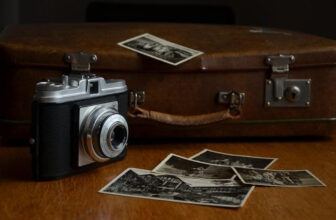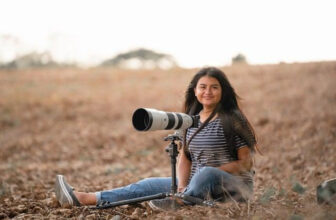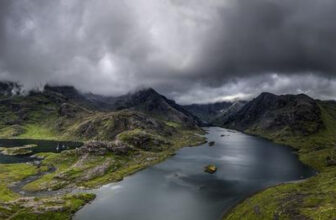Mastering the Art of Landscape Photography: Essential Tips
GoogleAds

Landscape photography is a captivating art form that allows us to capture the beauty of the world around us through a lens. From majestic mountains to tranquil lakes, the possibilities are endless. However, mastering this intricate craft requires skill, patience, and attention to detail. In this article, we will explore essential tips for mastering the art of landscape photography, guiding you through the process of capturing stunning images that truly reflect the beauty of nature. Whether you’re a beginner looking to improve your skills or a seasoned photographer seeking new techniques, these tips will help take your landscape photography to the next level.
Mastering the Art of Landscape Photography: Essential Tips
When it comes to capturing the beauty of nature through the lens, landscape photography is both challenging and rewarding. To truly master this art form, there are essential tips and techniques that every aspiring landscape photographer should know.
One of the most important elements of landscape photography is composition. Pay attention to the rule of thirds, leading lines, and framing to create visually appealing images. Experiment with different angles and perspectives to find the most captivating composition for your shot.
Lighting is another crucial aspect of landscape photography. The golden hours of sunrise and sunset offer the best natural light for stunning photos. Pay attention to the quality and direction of light to create depth and dimension in your landscapes.
Invest in high-quality gear, including a sturdy tripod, wide-angle lens, and filters to enhance your landscape photographs. Don’t forget to pack extra batteries and memory cards to ensure you never miss the perfect shot.
Lastly, practice makes perfect in landscape photography. Take the time to explore different locations, experiment with settings, and learn from your mistakes. With dedication and perseverance, you can truly master the art of landscape photography and capture breathtaking images that will stand the test of time.
Understanding Composition Techniques for Stunning Landscapes
When it comes to capturing stunning landscapes, mastering composition techniques is crucial for creating memorable photographs. Understanding how to frame your shots, use leading lines, and incorporate foreground elements can make a world of difference in the quality of your images. By following these essential tips, you can take your landscape photography to the next level.
1. Rule of Thirds: One of the most basic yet effective composition techniques is the rule of thirds. Instead of centering your subject, try aligning it with one of the imaginary gridlines to create a more dynamic and visually appealing image.
2. Leading Lines: Utilize natural elements such as roads, rivers, or fences to lead the viewer’s eye into the image. Leading lines can add depth and dimension to your photos, guiding the viewer through the scene.
3. Foreground Elements: Including foreground elements in your compositions can help add a sense of scale and depth to your landscapes. Look for interesting objects to place in the foreground, such as rocks, flowers, or trees, to create a more engaging image.
| Tip | Description |
|---|---|
| 4. Framing: | Use natural frames such as archways, windows, or overhanging branches to add a sense of depth and context to your photos. |
5. Symmetry and Patterns: Look for symmetry or repetitive patterns in the landscape to create visually striking compositions. Whether it’s a row of trees or a reflection on water, symmetry can add a sense of balance and harmony to your photos.
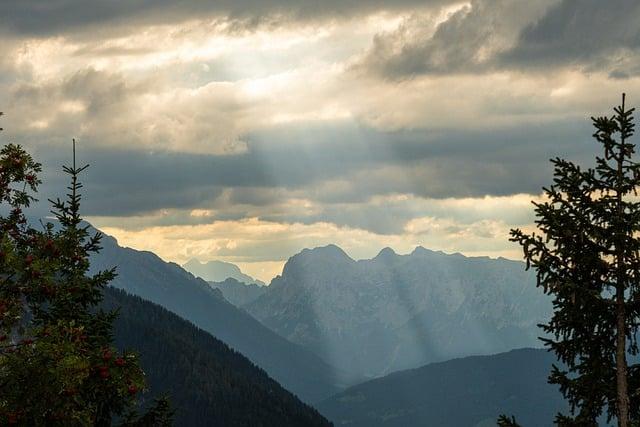
Utilizing Natural Light to Enhance Your Landscape Photography
Mastering the art of landscape photography goes beyond just capturing a beautiful scene. It involves understanding how to use natural light to your advantage to create stunning and captivating images. One of the key elements in landscape photography is the quality of light, and natural light can make a huge difference in the final result of your photos.
When it comes to utilizing natural light in your landscape photography, timing is crucial. The golden hours, which are the first hour after sunrise and the last hour before sunset, are known for their soft, warm light that adds a magical touch to your photos. This is the perfect time to capture landscapes with long shadows and beautiful colors that create a sense of depth and dimension in your images.
Another important aspect to consider when using natural light in your landscape photography is the direction of light. Front lighting, where the light source is behind you, can tend to flatten the scene and wash out colors. Instead, try shooting during the golden hours when the light is coming in from the side or back, creating more depth and texture in your photos.
One technique that can help enhance your landscape photos is backlighting. This involves shooting directly into the light source, which can create a dramatic effect with silhouettes and glowing highlights. Experiment with different angles and compositions to see how the light interacts with the landscape and find the perfect balance for your shot.
Overall, mastering the art of landscape photography involves understanding how to work with natural light to bring out the best in your photos. By paying attention to the quality, timing, direction, and techniques of light, you can elevate your landscape photography to the next level and capture breathtaking images that truly showcase the beauty of the world around you.
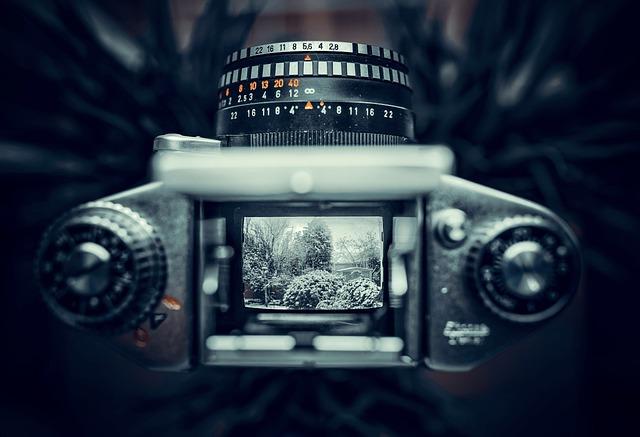
Choosing the Right Equipment for Capturing Landscapes: Cameras, Lenses, and Accessories
When it comes to capturing stunning landscapes, having the right equipment is essential. From cameras to lenses and accessories, each piece plays a crucial role in creating the perfect shot. Here are some tips to help you choose the best gear for landscape photography.
Cameras: When selecting a camera for landscape photography, consider factors such as sensor size, resolution, and dynamic range. Full-frame cameras are often preferred for their superior image quality and low-light performance. However, crop sensor cameras can also produce excellent results at a lower cost. Mirrorless cameras are becoming increasingly popular due to their compact size and advanced features.
Lenses: The choice of lens can significantly impact the final image. Wide-angle lenses are a popular choice for landscape photography as they allow you to capture more of the scene. Telephoto lenses are great for isolating specific elements in the landscape. Consider investing in high-quality lenses with low distortion and sharpness across the frame.
Accessories: In addition to cameras and lenses, there are several accessories that can enhance your landscape photography experience. Tripods are essential for achieving sharp, long exposure shots. Filters such as ND filters can help control exposure and create stunning effects. Remote shutter releases can reduce camera shake when shooting at slow shutter speeds.
| Camera | Lens | Accessory |
|---|---|---|
| Canon EOS 5D Mark IV | Canon EF 16-35mm f/2.8L III | Manfrotto MT190XPRO4 Tripod |
| Nikon D850 | Nikon 24-70mm f/2.8 | Lee Filters Big Stopper ND Filter |
Experimenting with different combinations of cameras, lenses, and accessories is key to finding the right setup for your style of landscape photography. Don’t be afraid to try new gear and techniques to push the boundaries of your creativity. Mastering the art of landscape photography is a journey, and having the right equipment is a crucial step towards capturing breathtaking images.

Exploring Locations and Timing for Capturing the Best Landscape Shots
Locations for Capturing the Best Landscape Shots
When it comes to landscape photography, choosing the right location can make all the difference in getting that perfect shot. Whether you prefer the serene beauty of a mountain lake or the dramatic cliffs of the coastline, the key is to find a place that speaks to you and ignites your creativity. Some popular locations for landscape photography include:
- The Grand Canyon in Arizona
- Yosemite National Park in California
- The Scottish Highlands
- The Amalfi Coast in Italy
Timing is Everything
In addition to choosing the right location, timing is crucial for capturing stunning landscape shots. The lighting during the golden hours of sunrise and sunset can transform an ordinary scene into a masterpiece. Be sure to check the weather forecast and plan your shoot accordingly to take advantage of optimal lighting conditions.
Tips for Capturing the Best Landscape Shots
To master the art of landscape photography, consider the following tips:
- Use a tripod to keep your camera steady and avoid blurry photos.
- Experiment with different perspectives, such as shooting from low angles or incorporating foreground elements.
- Adjust your camera settings to control exposure, aperture, and white balance for the desired effect.
- Don’t be afraid to wake up early or stay out late to capture the beauty of dawn or dusk.
Creating a Photography Itinerary
When planning a photography trip to explore new locations, consider creating a detailed itinerary to maximize your time and capture the best shots. Research the sunrise and sunset times, map out the best vantage points, and allow for flexibility in case of unexpected weather conditions. Remember, the journey of capturing stunning landscape shots is as rewarding as the final images themselves.
| Location: | Yosemite National Park |
| Best Time to Visit: | Spring or Fall for fewer crowds and vibrant colors |
| Must-See Spot: | Glacier Point for sweeping views of Yosemite Valley |
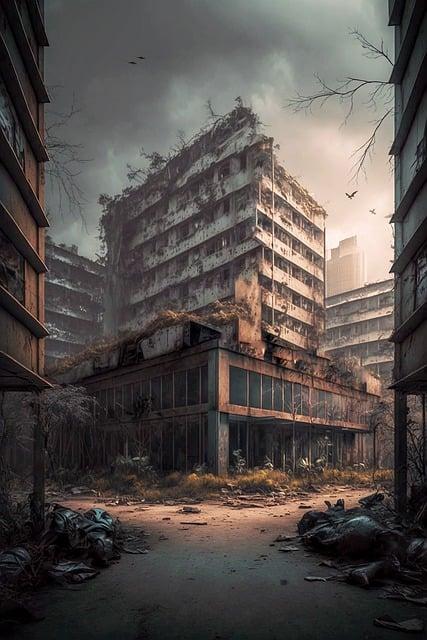
Mastering Post-Processing Techniques for Polished Landscape Photos
When it comes to capturing the beauty of landscapes through photography, mastering post-processing techniques is crucial to achieving polished and stunning results. With the right tools and knowledge, you can enhance your landscape photos to bring out the best in every shot. Here are some essential tips to help you elevate your landscape photography game:
1. Shoot in RAW format: RAW files contain more data and allow for greater flexibility in post-processing. They capture more detail and information, giving you more room to work with when editing your landscape photos.
2. Use selective editing: Instead of applying blanket edits to your entire image, focus on making targeted adjustments to specific areas. This can help you achieve a more natural and balanced look in your landscape photos.
3. Enhance colors and contrast: Play around with the saturation, hue, and luminance of different colors to make them pop in your landscape photos. Adjusting contrast can also add depth and dimension to your images.
| 4. Utilize filters: | Experiment with graduated neutral density filters or polarizing filters to enhance the sky, reduce glare, and improve overall image quality. |
5. Focus on detail and clarity: Sharpening key elements in your landscape photos can help draw the viewer’s eye and add a sense of realism to your images. Be careful not to overdo it, as excessive sharpening can lead to unnatural-looking results.

Staying Patient and Persistent for Capturing Unique and Memorable Landscapes
When it comes to capturing unique and memorable landscapes through photography, patience and persistence are key. It takes time and effort to find that perfect shot, so don’t get discouraged if it doesn’t happen right away. Keep exploring, keep searching, and keep shooting until you find the image that truly stands out.
One essential tip for mastering the art of landscape photography is to scout out locations in advance. Take the time to research potential shooting spots, visit them at different times of day, and observe how the light changes. This will help you determine the best time to capture the scene in its most stunning form.
Another important tip is to pay attention to the weather and how it can impact your shots. Cloudy or overcast days can create moody and dramatic landscapes, while bright sunlight can wash out colors and create harsh shadows. Be flexible and willing to adapt to the conditions to make the most of your photography opportunities.
Composition is key in landscape photography, so be mindful of the elements within your frame. Use leading lines, foreground interest, and the rule of thirds to create dynamic and visually appealing images. Don’t be afraid to experiment with different angles and perspectives to find the most unique and striking composition.
Finally, don’t forget to take the time to post-process your images to enhance their impact. Use editing software to adjust colors, contrast, and sharpness to bring out the full potential of your landscape shots. Remember, mastering landscape photography is a journey, so stay patient, stay persistent, and keep honing your craft to capture those unforgettable moments in nature.
Q&A
Q: What are some essential tips for mastering the art of landscape photography?
A: Some essential tips include ensuring proper lighting, framing your shot carefully, and considering the composition of the landscape.
Q: How important is lighting in landscape photography?
A: Lighting is crucial in landscape photography as it can make or break a shot. The golden hours of sunrise and sunset often offer the best lighting for capturing stunning landscapes.
Q: How can one effectively frame a landscape shot?
A: Framing involves considering the foreground, middle ground, and background of the shot to create depth and interest. Utilizing leading lines and the rule of thirds can also enhance the composition of the photograph.
Q: What role does composition play in landscape photography?
A: Composition is vital in landscape photography as it helps to guide the viewer’s eye through the image and create a sense of balance and harmony. Elements such as symmetry, patterns, and textures can all contribute to a well-composed landscape shot.
Q: How can photographers improve their editing skills for landscape photography?
A: Practice and experimentation are key to improving editing skills for landscape photography. Utilizing editing software such as Adobe Lightroom or Photoshop can help enhance colors, contrast, and sharpness in landscape photos.
Q: What are some common mistakes to avoid in landscape photography?
A: Common mistakes to avoid include over-editing photos, neglecting to scout locations in advance, and failing to consider the weather and lighting conditions before shooting. Additionally, cluttered compositions and lack of focal points can detract from the overall impact of a landscape photograph.
In Summary
Mastering the art of landscape photography is an ongoing journey that requires passion, dedication, and a deep understanding of the natural world. By applying the essential tips outlined in this article, photographers can enhance their skills and capture stunning images that truly showcase the beauty of the landscapes around them. Remember to practice, experiment, and never stop learning in order to continuously improve your craft. So grab your camera, head out into the great outdoors, and start mastering the art of landscape photography today. Happy shooting!
GoogleAds



